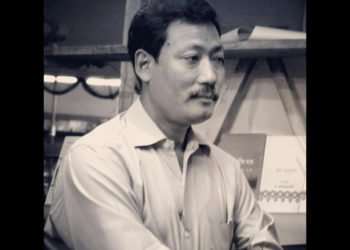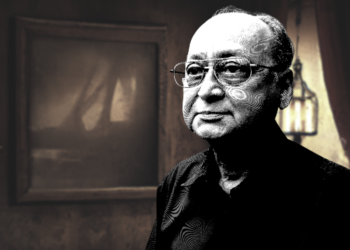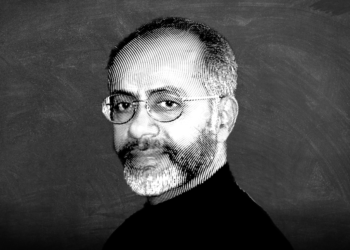It appears that there is a chronic tendency on the part of the State to exert control over institutions of higher learning, particularly the public university. This tendency has always been there. However, at times it assumes a form of an acute condition. This could be part of a mindless habit of a paranoid system. This could also be at the behest of the dominant ideologies that run governments at any given time.
Provisions for control by the state have always been part of the template for legislations and statutes of public universities in India. This is one of those colonial legacies that successive governments in the post-independence era have found convenient to let be. The control that the state exercises over critical appointments in university leadership is well known. What is perhaps not as well known is that governments can potentially have a say in the appointment of even the junior most member of the faculty in most public universities through the statutory presence of a nominee of the Visitor or Chancellor (which is practically a part of the government) in all selection committees. Also, there is a provision in many public universities that every ordinance (including those on new academic programmes or courses) has to be communicated to the Visitor, Chancellor or the government, who, in turn, reserves a statutory right to disallow it at any time. Standardisation through common statutory structures, uniform course-syllabi and so on, promulgated and regulated through fiats from regulatory bodies from time to time has been another method of control.
Not that these provisions are actively invoked ordinarily and consistently, but their very existence establishes beyond doubt that among those who believe that the most important function of the state is to be the guardian and preserver of the social order, there is always a lingering fear that the university, through its very nature and conduct, might unleash ideas that would some day be disruptive of the preservation of such an order. It is not as though that university in reality is always a subversive institution. Far from it, I think. Most of our universities today, like other institutions, are sadly, by and large, quite tame and conforming, governed by the dominant commonsense and the mainstream ideas of our times. There are some exceptions but, exceptions only prove the rule. Then why bother to control the university in the first place? My sense is that, it is the symbolic appeal of university as a potential source of dissent and divergence that is too seductive for the state actors to resist the attempt at controlling.
In its ideal form, university is about reason, compassion and creativity. When new ideas need to be germinated, they need a nursery, a trial ground. That is what university provides. It offers a protected space for interrogating commonsense, pushing the envelope of popular sensibilities little by little, breaking new frontiers, slowly and tentatively, in the ways of thinking and feeling. It nurtures divergences. More than anything else, the university provides a space for humanism and compassion. It trains young people to attend to the muffled and muted voices, and to the silenced empathically. But it also encourages them to interrogate their own selves and to question the very structures they are born and socialised into. All the above put together is the ‘higher learning’ that the university is mandated for. However, ‘higher learning’ sometimes also leaves young people in intense personal struggles to deal with the altered (and at times, fractured) realities about their selves and their contexts that they have co-constructed in university. Perhaps, this is the inevitable life-long struggle that goes invariably with growing up and continuing to live as a thinking, reflective, creative and compassionate person.
There is always a tension among the dominant, the popular and the conventional in the larger society on the one hand, and the new sensibilities and the ways of feeling, thinking, and expressing that the university seeks to nurture on the other. This, to my mind, is a positive tension, and is often the source of energy for creativity. Having said that, the tension should be of just the right quantum. It should be just enough to inspire defiance in the form of divergent thoughts or expressions, not too less to lull creative processes, and not too much to intimidate experimentation altogether.
Experimentation with new ideas and forms of expression must find protection within university so that creative minds do not have to be bogged down having to second-guess every time a new idea occurs to them on the possible reception that it might receive from the world outside. It is university’s job to give space for experimenting with untested ideas and to facilitate processing, scrutinising, refining and testing them with accepted standards of rigour, and establish the extent of their validity and their possible consequences for the society. This entire exercise is however done in a contained manner, through what I would term as ‘the academic due process’.
A delicate insularity is built into the structure of university, more by convention than by law, that gives its inner space the immunity, and adequate protection from the forces from outside that demand conformity. This is a selectively permeable boundary, much like the ‘brain-body barrier.’ It works well under normal circumstances. However, when the dominant forces of the society go through phases of deep insecurity, and when tolerance for differences or dissent reaches its very nadir, the tension between university and society would get exacerbated to a point of rupture. That is where the selectively permeable boundary between university and society gets violated. Those are times when the faculty find themselves walking on a razor’s edge. Their instinct mostly is to protect the inner space of experimentation – which is part of the academic due process of which they are the custodians -, at any cost.
The event in the summer of 2007 in the Faculty of Fine Arts in Baroda is a case in point. That incident is quoted often to instantiate undesirable and unacceptable curbs on freedom of artistic expression. I would however argue that the event was also an instance of a violation of university’s insularity. To my mind, it signified the breakdown of an academic due process. (What the right-wing elements disrupted that day was an examination process.) The irony however was that the faculty who stood up to protect the academic due process had to eventually face punitive action from the university, precisely for doing what they were supposed to do.
Once its insularity is violated, the university would stand so helplessly exposed. The lived and shared reality of experiencing such violation would in many cases petrify the university community to a stunned silence, forcing them to “turn inwards”1 and eventually allow themselves to regress to intellectual isolation and perhaps, into mediocrity. The faculty recognises the need to protect the spaces contained in the academic due process from such a violation at any cost as one of paramount importance. Therefore, their instinct is often to muffle explosions of experimentations well within the innermost cloisters of academic structures and processes. However, in their sincere effort to protect free expressions by keeping them cloistered from the “the goons from outside,” they run the risk of ending up smothering the very creativity and freedom they are trying to protect. Anxious about preserving the protective space of university, some of us at times have erred in this respect. Decisions as to how far one must choose to stay below the radar and what might be the right moment and for what cause to come out in open defiance is often extremely difficult to make.
In the final analysis, imposing controls over university is an unimaginative and a rather clumsy way of killing new ideas. At the end of the day, it is pathetically ineffective. If an idea is prevented from expressing itself in the contained inner spaces of a university, it will still find its own ingenious ways of manifesting somewhere else, in some other form, through some other set of actors. However, one should not expect to find in an idea thus making its expression in this manner the sophistication, and perhaps the coherence, that is usually associated with having been taken through the academic due process. On the other hand, it is likely to manifest with much greater and uncontained aggression. When it is the time for an idea, there is no stopping it.
1. Achar, D. (2015). “After 2007: Towards the Art of Quietness.” In Baroda: A Cosmopolitan Provenance in Transition. ed. P. Maholay-Jaradi. Mumbai: Marg Foundation.




